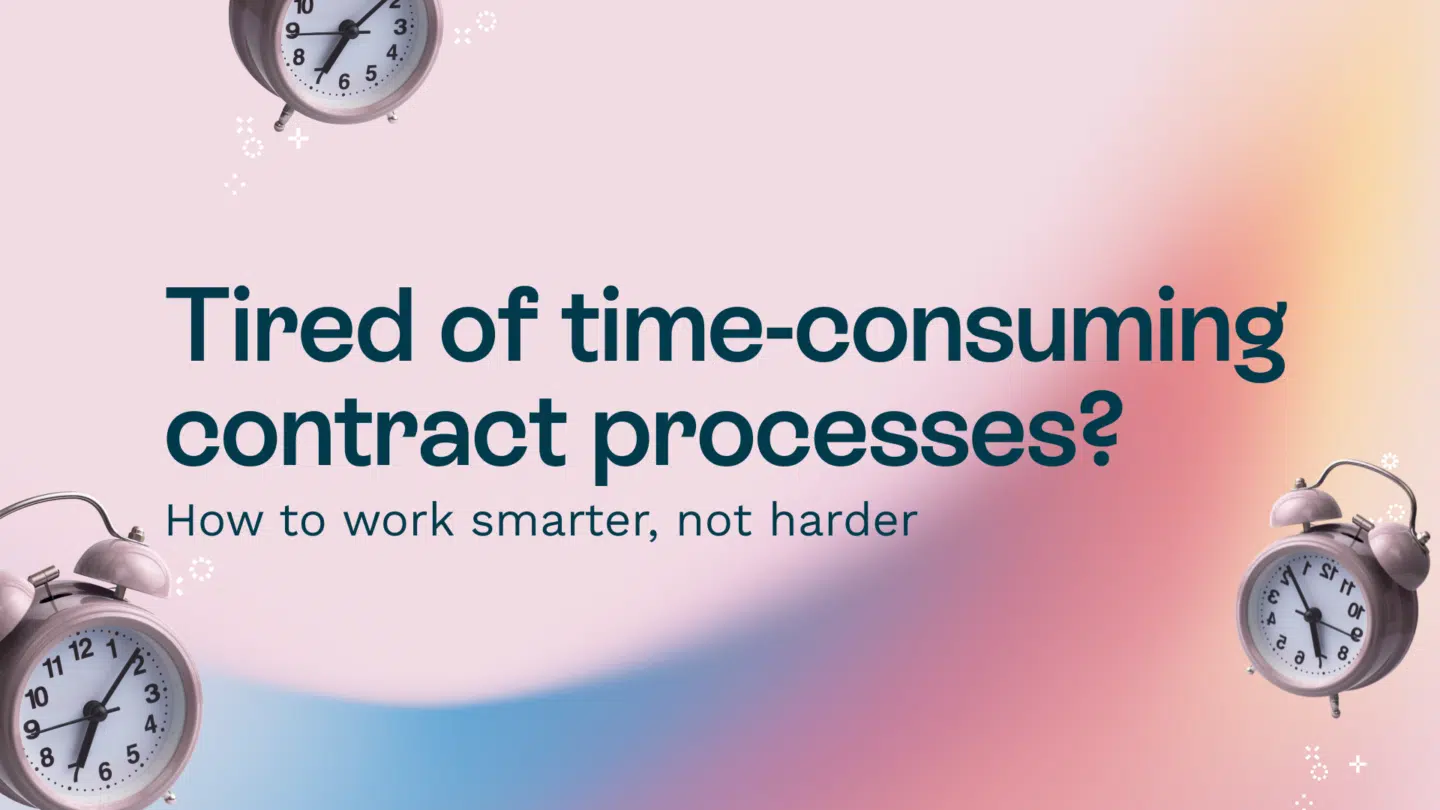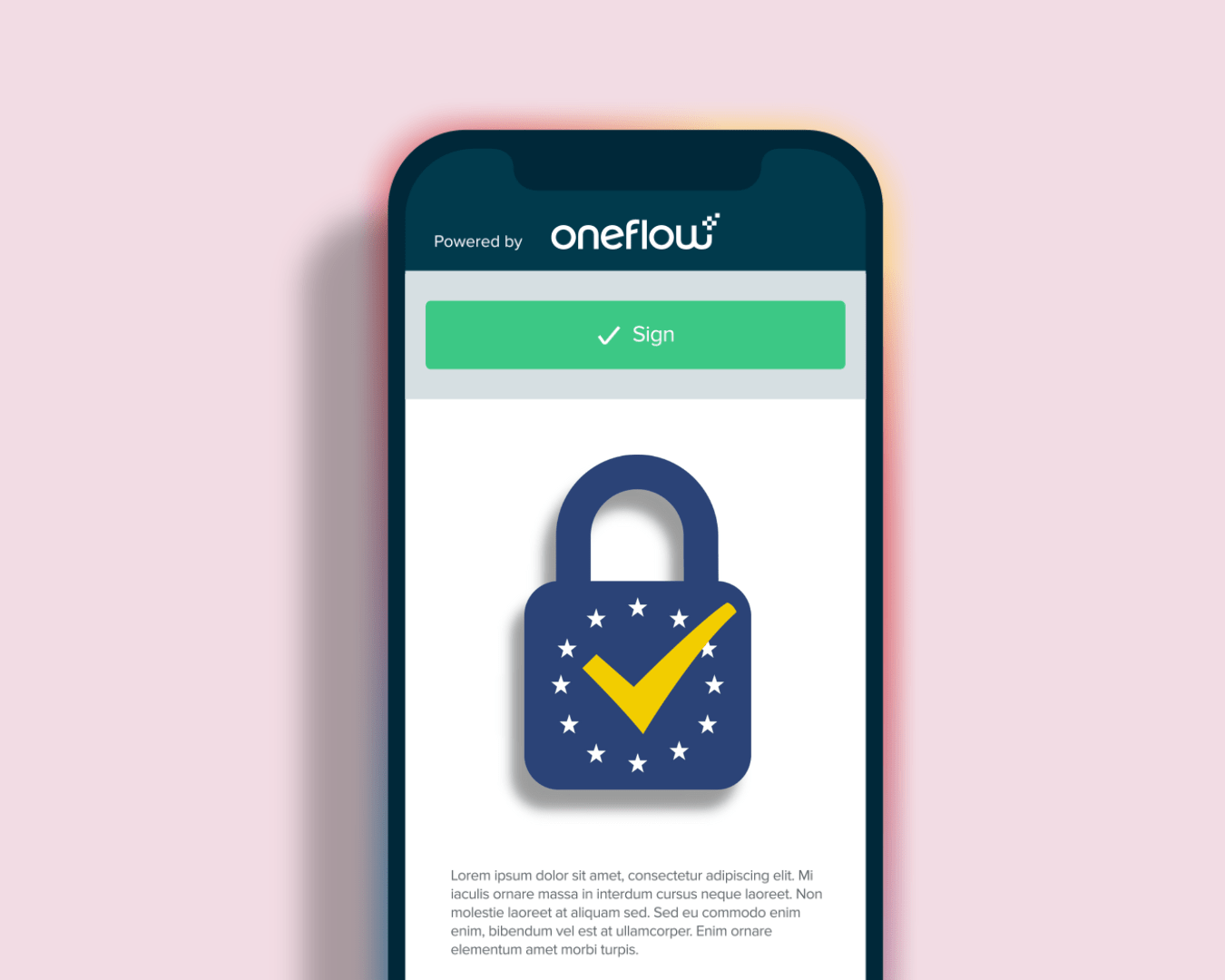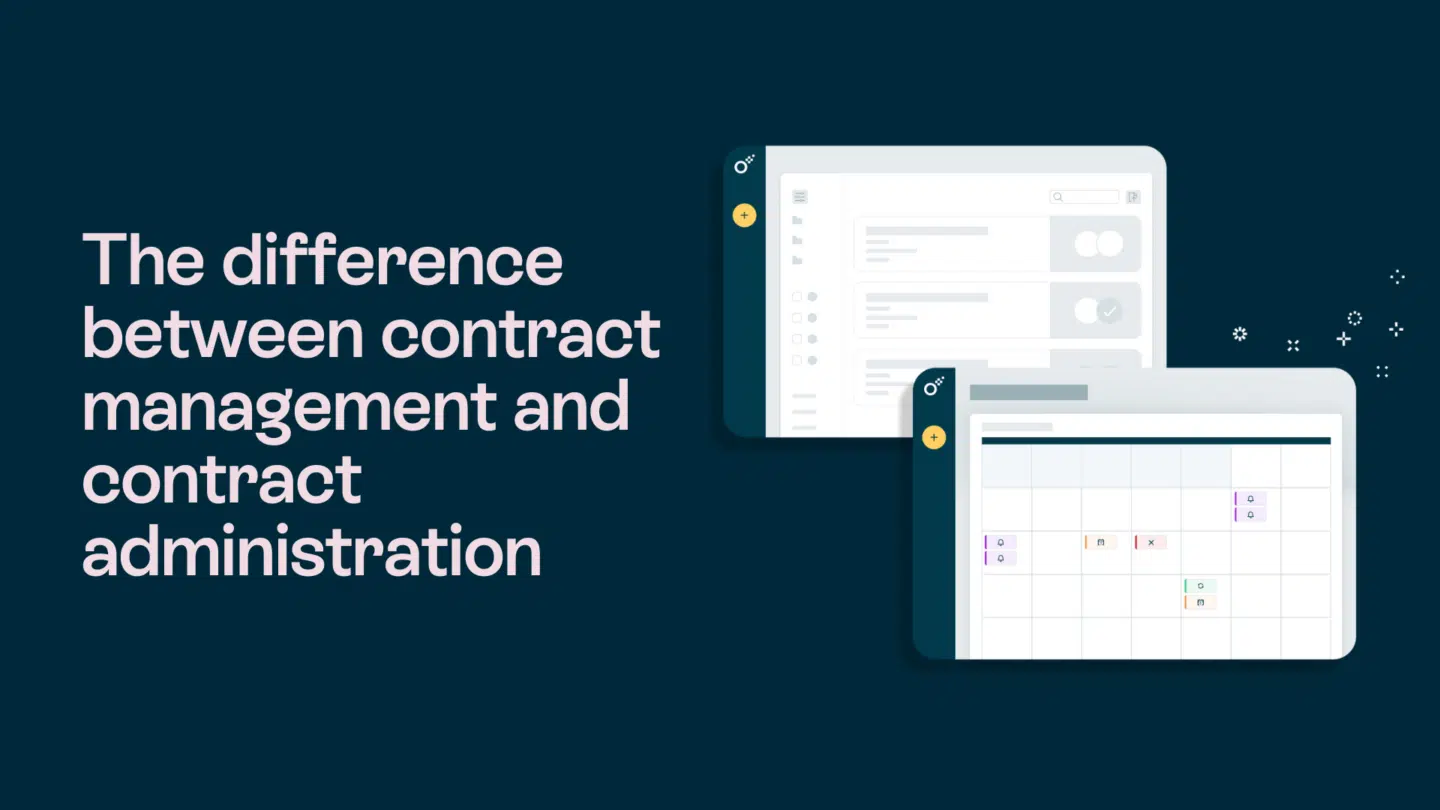Let’s face it. Contracts are supposed to bring clarity, not chaos. But somewhere along the way, they’ve turned into time sinks. Time-consuming contract processes – drafting, printing, scanning, emailing, waiting for signatures, version tracking, reminders… all the back-and-forth – eat up hours that could have gone to doing actual work.
If you’re handling contracts regularly, whether you’re in sales, HR, legal or ops, you already know the pain. So the question is: why are so many organizations still managing contracts like it’s 2005?
Here’s a reality check: manual contract workflows aren’t just outdated, they’re expensive. According to World Commerce & Contracting, poor contract management can cost companies up to 9.2% of annual revenue due to missed deadlines, bottlenecks, and compliance issues.
It’s time to start working smarter.

The hidden cost of “business as usual”
You might think: “We’ve been handling contracts this way for years, and it works fine.” But “fine” isn’t the same as smart. Or scalable.
Let’s break down a typical manual contract process:
- A template is copied from a shared drive.
- It’s manually edited in Word or Google Docs.
- It’s saved as a PDF and emailed for review.
- Someone prints it, signs it, scans it, and sends it back.
- If changes are needed, the cycle repeats.
- The final version gets stored “somewhere” (maybe).
- Someone adds a calendar reminder for renewal. Maybe.
Sound familiar?
Not only is this slow and frustrating, but it also opens the door to version confusion, human error, compliance risks, and lost opportunities. Multiply that by the number of contracts your team handles monthly, and the hours – and money – slip away quietly.
Contracts don’t have to be this way
What if contracts were dynamic, searchable, automated, and connected? What if the data inside them could trigger actions, inform decisions, and sync across your tools?
Modern contract management isn’t just about going digital, it’s about making contracts work for you.
Here are five ways to flip the script:
1. Cut the chaos with live collaboration
Version control is the silent killer of productivity. Jumping between email threads, attachments named “final_final2.pdf” and side comments on Slack is a recipe for delays.
Modern platforms let you collaborate on the same contract in real time. Think Google Docs, but for legally binding documents. Everyone sees the latest version. Comments are centralized. Edits are tracked.
It’s faster, clearer, and there’s zero room for “Wait, which version are we signing?”
Read this too: Collaboration is key. Especially in your contracts.
2. Turn contracts into living data
Traditional contracts are dead documents; once signed, they sit in a folder collecting digital dust. But contracts are full of data: terms, values, dates, obligations, renewals.
Smart contract platforms extract and structure this data automatically, turning each agreement into a living object that can trigger workflows, reminders, and analytics.
This means:
- Never missing a renewal or deadline again.
- Auto-populating contract data from your CRM or HRIS.
- Creating dashboards that actually show contract performance.
In short: contracts stop being static PDFs and become dynamic assets.
3. Automate everything that doesn’t need a human
Let’s be honest; most of the admin around contracts doesn’t need to be done manually. Automated templates, approval flows, e-signatures, and reminders can take care of the heavy lifting.
You should be focusing on the negotiation, not the copy-paste.
Smart contract workflows allow you to:
- Auto-generate contracts from templates based on form inputs.
- Set approval rules (e.g. legal signs off if value > $10k).
- Send automated reminders for pending signatures or expirations.
- Track who has opened, reviewed, or signed – in real time.
Automation doesn’t replace humans. It gives them space to think.

4. Say goodbye to integration nightmares
Contracts don’t exist in isolation. They touch sales, HR, finance, legal, procurement, and live across tools like HubSpot, Salesforce, BambooHR, Slack, Google Drive, and more.
Instead of jumping between tabs, your contract tool should talk to the rest of your stack.
With native integrations and APIs, you can:
- Create contracts directly from your CRM.
- Sync signed agreements to your storage or ATS.
- Trigger invoicing automatically after signing.
- Notify stakeholders via Slack or email in real time.
When systems talk to each other, people don’t need to.
Read also: Integrations are a lifesaver when it comes to getting more done more efficiently
5. Ensure compliance without slowing down
One reason contract processes tend to be clunky? Compliance. And fair enough, contracts are legal documents. But guarding against risk shouldn’t come at the cost of speed.
Modern contract tools balance both. With audit trails, role-based permissions, approval workflows, and tamper-proof e-signatures, you get compliance baked in, without adding extra work.
And for those working across borders, having built-in support for local e-signing standards (like BankID in Sweden) keeps everything legally binding and above board.
So, what’s the smarter way?
Smarter contract management isn’t about adding more tools or more rules. It’s about removing friction, for everyone involved.
Whether you’re hiring a new employee, closing a deal, or onboarding a supplier, the same principles apply:
- Make it easy to create the right document.
- Keep everyone on the same page.
- Remove manual work wherever possible.
- Turn contracts into data, not PDFs.
- Integrate contracts with the rest of your operations.
The result? Faster cycles, fewer mistakes, better experiences – for both your team and your counterparts.

Why Oneflow?
This is exactly the kind of future Oneflow is built for.
Unlike traditional contract tools that simply digitize a paper-based workflow, Oneflow rethinks contracts from the ground up. Every contract is digital from draft to signature – and beyond. It’s interactive, automated, data-rich, and easy to integrate.
Here’s how Oneflow stands out:
- Truly digital contracts, not just PDFs with signatures.
- Live collaboration so you can edit in real time – even after sending.
- Smart templates that reduce human error and save time.
- End-to-end automation, from creation to renewal.
- Audit-proof security and legal compliance, including eID support.
- Deep integrations with your existing tools, no context-switching.
- Searchable, structured contract data that powers decisions and reporting.
Working smarter with contracts isn’t just a nice-to-have. It’s a competitive edge. And with Oneflow, it’s surprisingly easy to get there.
Smarter, not harder: Real results from real users
“We’ve cut our contract turnaround time from days to hours.”
“Our sales team doesn’t need to ask legal for help every time.”
“We actually like working with contracts now.”
These aren’t just quotes, they’re outcomes from Oneflow customers across industries.
And according to a Forrester report, companies that digitize contract management see a reduction of 50% in contract cycle time and a risk reduction of up to 30% (Forrester, 2023).
Ready to leave time-consuming contract processes behind?
Contracts don’t have to be slow, static, or painful. They can be fast, flexible, and frictionless – if you have the right platform.
The smarter teams have already made the switch. Not because it’s trendy, but because it works. For them, contracts are no longer a bottleneck. They’re a business advantage.
So the next time you find yourself stuck in a contract spiral, ask yourself:
What if this was easier?
Then go make it happen. Book a demo now.







